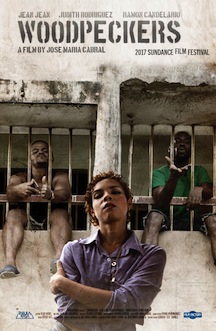Directed by Albert Serra
Country: France / Spain / Portugal
The purist cinema of Catalan Albert Serra was never easy to assimilate whether due to its deliberate fluctuating pace or challenging topics, yet, in my eyes, it’s always fascinating. If last year’s “The Story of My Death” managed to aggregate a few more followers of Serra’s singular indie style, the heavy historical drama "The Death of Louis XIV" will divide audiences since the prolonged cheerlessness related to the unhealthy state of the cited French king, who reigned for 72 years and died slowly of gangrene at 76, can be frustrating, gloomy, and distressing.
The script, penned by Serra and Thierry Lounas, was inspired by the Duke of Saint Simon’s memoirs, focusing exclusively on the last days of the King. You'll witness his gradual disappointment, whimsical exasperation, and occasional despair, as well as the vain efforts of a group of experienced medics who were trying to solve the puzzle related to the sovereign’s ailment.
The first scene of the film got stuck in my head. Louis, flawlessly performed by Truffaut/Godard’s protégé Jean-Pierre Léaud, sunk down in a huge chair with a weary expression on his face, saying he would love to join the guests in his grandiose salon but couldn’t find the strength to do it. His prostrated eyes only sparked when his dogs were allowed to come near him, a very rare situation since Dr. Fagon (Patrick d'Assumçao) has prohibited any contact with the animals.
A group of loyal friends, stationed around his bed, applauds gleefully whenever his appetite returns, but his unresponsiveness for the court’s matters is quite visible, especially when the Duke of York insists about unlocking funds to finance a security construction plan.
Feverish and nauseated, Louis grows weaker each day that passes and his leg problem has no immediate solution. Both Fagon and Blouin (Marc Susini), the king’s most devoted servant, end up agreeing in summoning the best doctors of the Faculty of Paris. However, and since their theories also reveal to be useless, the last hope is Le Brun (Vicenç Altaió), a confident healer from Marseille, whose vague mystical creeds are regarded with deep suspicion by the medical team.
The lugubrious, dusky atmosphere encircling the story requires patience and nerve, but is also poised, touching, and mature. The settings, impeccably mirroring the era, were depicted with a keen eye for detail and it's noticeable the triumphant aptitude to combine colors and shadows within the impressionistic image compositions. Each Rembrandt-like close up gives us instant access to a particular state of mind, such is the power of the human expression captured by the frames. While Jonathan Ricquebourg’s jaw-dropping cinematography is purely revivalist, the direction, one of the most accomplished I’ve seen these days, is filled with incantatory rigor.
Totally shot indoors in a conscious yet agonizing delirium, "The Death of Louis XIV" is a long, slow, and arduous walk toward an inevitable death.




























































